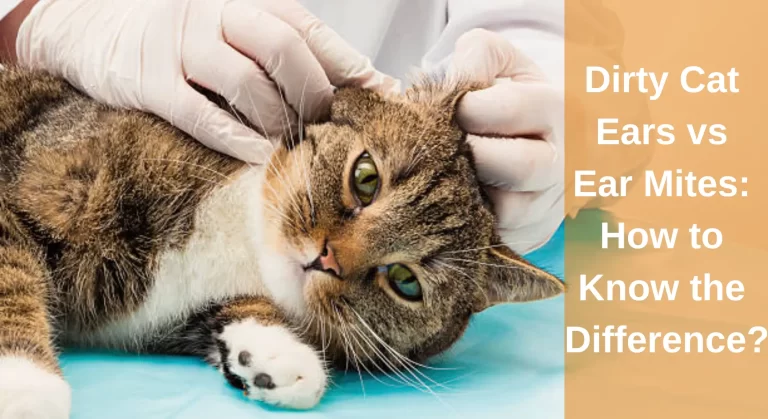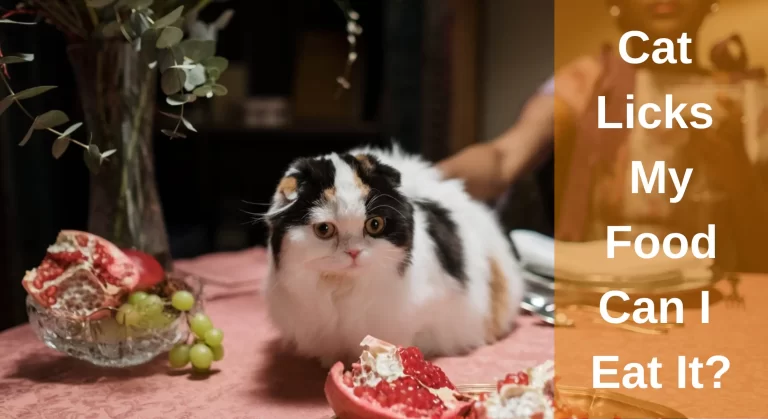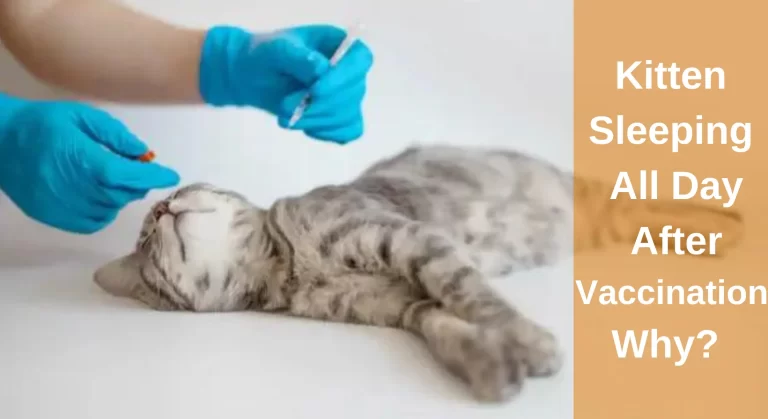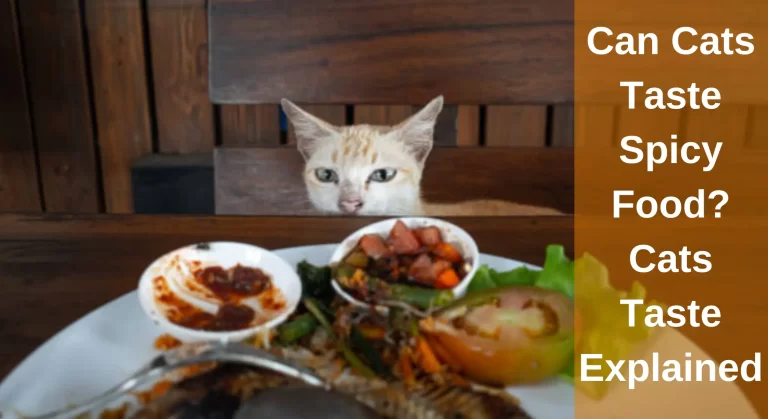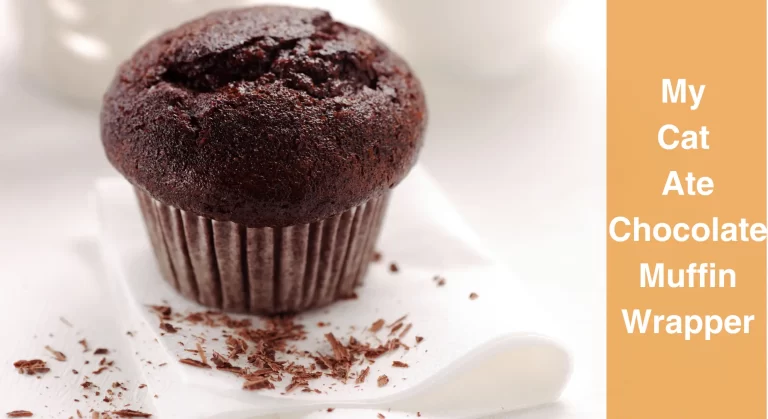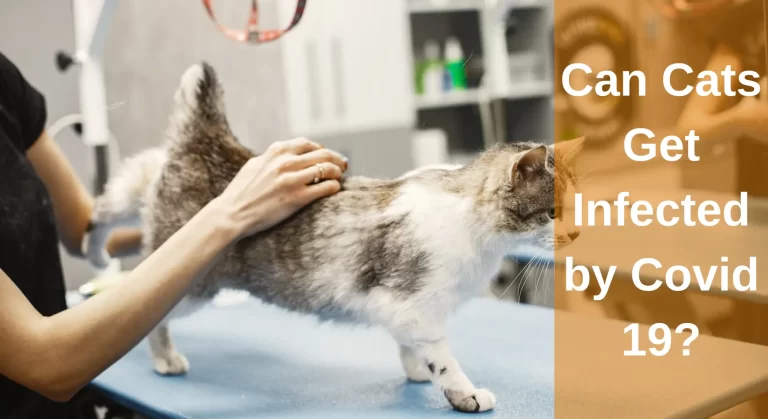The Ultimate Guide To – How to Get Your Cat to Drink More Water (Trips & Tricks)
Dehydration is a common problem in cats. Since they are descendants of deserts, they need less water daily to survive than other animals. But the fact is that water is an essential component of their diet.
Several medical conditions also call for cats to drink more, e.g., Urinary tract infections etc. Your Cat is actually making an attempt to urinate, but just a tiny quantity comes out; they need to visit a vet. However, increasing your water intake could help you flush the sickness. Kidney illness is a different health issue that has to be addressed.
Cats with renal disease urinate more frequently and lose more fluid because they are unable to concentrate their urine. To compensate for this behaviour, they take more water to avoid dehydration. It can seem impossible to increase your Cat’s water consumption. On this page, I’ve included beneficial strategies (how to get your Cat to drink more water?).

Why is Drinking Water so Important for Cats?
Drinking water is essential for the following reasons in addition to preventing dehydration:
- Assists the kidneys in eliminating toxins
- Makes digestion better
- Maintains the body’s temperature
- Lowers the likelihood of kidney and bladder stones developing
- Increases blood flow
- Transfers and assimilates nutrients using
- Among many other things, it keeps the body’s essential organs healthy and hydrated so they can function properly.
Check Out: Can You Give Cats Milk of Magnesia? Things You Need To Know
What Are the Dangers If a Cat Does Not Drink Enough Water?
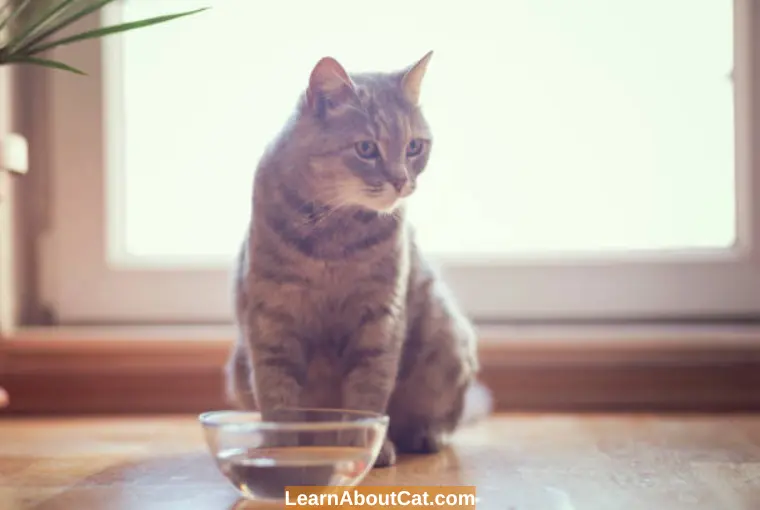
One of the primary dangers brought on by your Cat’s insufficient water consumption is dehydration. Your Cat will get dehydrated if its body’s water and electrolyte levels are out of balance as a result of using or losing more fluids than they are consuming.
More than simply not drinking enough water, several other factors can lead to dehydration. Prescription medications, nursing kittens, or senior cats with restricted mobility might all contribute to it.
Situations that Could Cause Dehydration
- Diarrhoea
- Vomiting\sRegurgitation
- Diabetes
- Heat stroke and renal disease
- Hepatic lipidosis due to hyperthyroidism
- Dehydration poses several health hazards, including a serious electrolyte imbalance.
- Decreased supply of blood and oxygen to the body’s organs
- Death from the accumulation of harmful compounds in the body
- In addition to the risk of dehydration, improper water consumption can cause your Cat to lose energy, have poor organ function, have poor skin health, and have a higher possibility of developing a urethral obstruction in male cats.
Find Out: Cat Not Eating or Drinking- How Long Can a Cat Survive?
How to Hydrate a Cat That Won’t Drink Water?
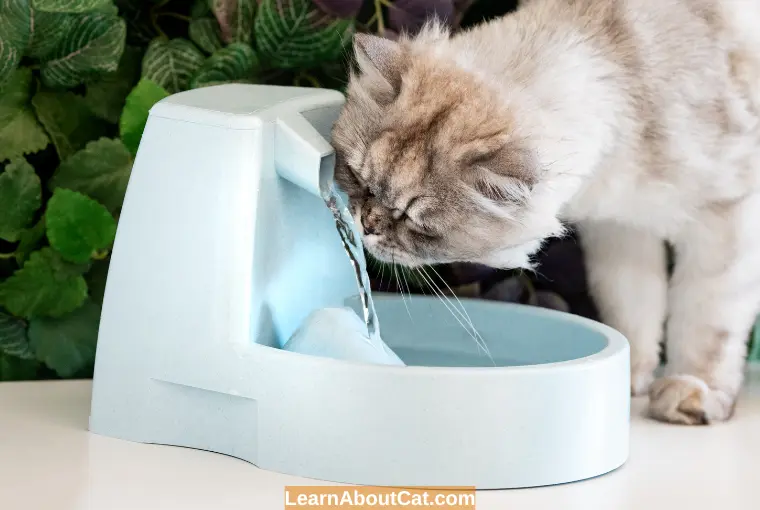
Cats often don’t drink a lot but still need water to be hydrated and healthy.
Here are some of the greatest suggestions and techniques you may use at home to encourage drinking. These are all endorsed by veterinarians; thus, they are all absolutely safe. Never, however, force water down your Cat’s throat. Instead, it involves learning about their preferences and putting them into practice to make drinking more alluring and enjoyable.
1. Place the Water Bowl in A Quite Place
Next, you should consider where to put your Cat’s water bowl. Is there a lot of traffic nearby? Most cats won’t like drinking from their dish if it’s close to a busy place where a lot is going on. How are they expected to concentrate on drinking with everything going on?
Avoid letting your cat drink close to the bathroom, just as you wouldn’t want to. Do yourself a favour and put your Cat’s water bowl in a whole other room other than the bathroom or near it.
2. Fill the Water Bowl to the brim
Another easy fix is to fill your Cat’s water bowl completely. Cats frequently experience problems with their whiskers. These cats’ whiskers are so fine that touching the edge of a dish may overstimulate their brains. This is so stressful that cats could stop drinking and eating.
If the dish is full, their whiskers won’t brush against the side with each sip. Instead, they may raise their heads above the bowl and gulp water with their mouths. Your Cat won’t be prevented from drinking, and there won’t be any sensory overload or touching of the whiskers.
3. Wash their Dishes Regularly
Be sure to clean the water bowls for your cat in addition to replenishing them. After all, even the best cuisine in the best environment is pointless if it is dirty. Cats are quite choosy; therefore, they will surely avoid drinking from a dirty bowl.
You should completely empty it and wash it with soap at least once every week. Water is not dirty, even if a biofilm that is sticky may form around the edges. The flavour of your Cat’s water will be terrible if this isn’t removed.
4. Try a Different Style of Water Bowl
Consider the components that went into making the water bowl for your Cat. Plastic bowls are typically less costly; however, they frequently retain odours. These odours may taint the water over time from continuous use, giving it a bad taste. These bowls are also readily scratched, and the tiny fractures that are left behind provide the ideal conditions for bacteria to flourish.
As a result, the majority of veterinarians suggest using stainless steel or ceramic cat water bowls. Not only are they very easy to clean, but they also don’t retain odours that can seep into the water.
5. Give them Wet Cat Food
Want to know my top-secret method for hydrating a cat that defies your best attempts to sip water? Increase the water content of the meal. The fact that your Cat consumes water is more important than how they do it.
Between 70% to 80% more moisture is included in wet cat food than in dry kibble. This suggests that switching to wet cat food will provide your Cat with most of the water it needs daily. They may stay hydrated to the moisture in their food.
Also Read: Older Cat Not Eating But Drinking: Reasons And How to Help
6. Make Sure the Water is Fresh & Clean
Most cats will only drink fresh water(running water) and are known to be finicky creatures. We really can’t blame them. It does have a terrible, stale, and slow flavour. Since cats have far more developed senses than people, they will taste stagnant water much worse than people.
A cat’s requirement for fresh water is also tied to its ability to survive. In the wild, drinking stagnant, stale water increases your risk of becoming sick. The water in your Cat’s dish won’t have any dangerous illnesses, but your Cat may still want to drink.
Also Check Out: Can Cats Drink Distilled Water?
7. Buy a lot of Bowls
Do you require one more simple method to get a cat to drink more water? Put many water bowls all throughout your home so that they have easier access to water. You could occasionally accidentally prevent your cat from getting water. Or, if you have several cats, none of them will be able to drink at once. If you have many bowls, even if one of them tips over, your Cat will still have access to plenty of water.
8. Use a Water Bowl With a Unique Design
Try presenting a cat with different plates to get it to drink water. Whisker fatigue bowls are one example I’ve already discussed. These are ideal for cats with delicate whiskers because of their wide form. But there are also many different shapes and sizes available for cat water bowls. For senior cats, an elevated cat bowl could be a good idea to promote drinking.
9. Use a Cat Water Fountain
This is relevant to survival in the wild once more since drinking from flowing water is safer than from a stagnant pond or puddle because it is less likely to be poisoned.
There are several variations on the market for cat water fountains, which have become fairly popular. In my view, cordless cat fountains are the best. Since you can position them wherever in your home, you don’t need to be concerned about the cables becoming an issue. But if you’d rather have another option, there are AC-powered fountains.
10. Improve the Flavour of their Water
Try adding more delicious items to the dish if your Cat is still refusing to drink the water. You may add some chicken broth or tuna juice to enhance its flavour. Cats sometimes find it difficult to resist the smells of meat or fish. They’ll feel the temptation to drink much more often.
Make sure the tuna juice you’re adding is packaged in water rather than oil. Do not add excess salt or an amount of oil in Cat’s food.
11. Put Water in Their Meals
Perhaps you don’t want to alter the food your cat eats. There is no guarantee that your cat will respond favourably to their new diet, and the adjustment does take some time to complete. Or perhaps you are aware that your Cat is finicky and will only consume the dry food you are feeding her.
By sodium water or simply water for dry kibble, your Cat will drink more water without having to become used to any new food flavours.
Check Out: How To Soften Dry Cat Food?
12. Encourage your Cat’s peculiarities
My last piece of advice for persuading a cat to drink water is to encourage its unique characteristics. Do jumping on the counter and drinking from the faucet rank among your Cat’s favourite pastimes? Before turning the tap off, let it sometimes spring up and take a sip.
Similarly to this, I regularly catch my cat drinking from a glass of water I had poured for her. Permit them to go on! You shouldn’t be concerned about this either; it’s acceptable to sip from a glass from which your Cat has drunk. The worst-case scenario is genuinely having some fur floating around in your mouth.
Interesting Reading: Why is My Cat Drinking a Lot of Water and Meowing?
Tips to Get Your Cat to Drink More Water
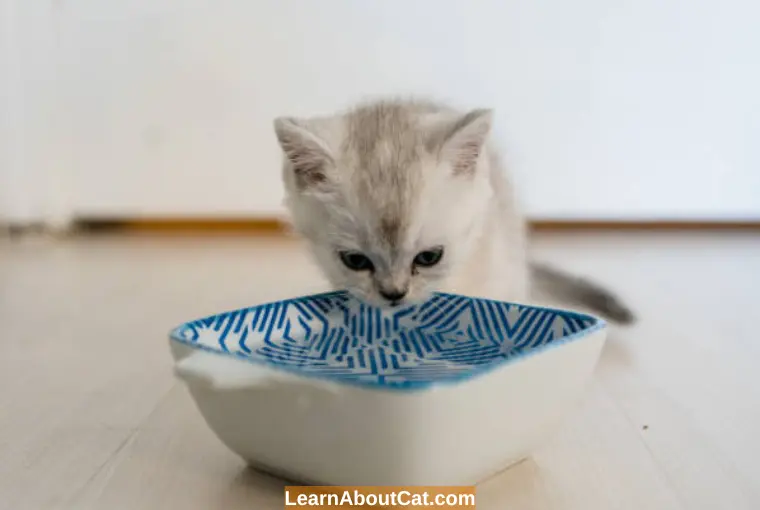
Even if your Cat isn’t showing any signs of dehydration, you should still be worried about its water consumption. Not everything will work since every Cat is different. Simply be cautious and patient, go slowly, and determine what would benefit your Cat the best.
1. Chill the Water Bowl
To make more use of this advice, freeze tuna, salmon, or clam juice in ice cubes. Simply combine clam juice or tuna juice with some water, then pour the mixture onto an ice-cube tray.
2. Cleaning up
Clean your Cat’s water bowl every day to get rid of any germs and unpleasant odours. Their bowls and glasses should be filled with fresh water every day. Avoid using plastic plates since they can be more difficult to clean and could contain odours that could deter cats from drinking.
3. Modify the Source
Cats may be finicky, so if yours isn’t like the tap water you’re using, you could want to filter it or switch to bottled water. Distilled water could be an exception to this, though. While using it on rare occasions is OK, doing it frequently might result in your Cat’s urine losing pH and becoming acidic.
4. The Right Position at all times
In order to allow your Cat to drink without being harassed, try to place the water bowl in a quiet spot. Placements near often-opened doors or in busy areas are to be avoided.
5. Combine and Blend
You may need to combine a couple of the aforementioned remedies and try out a few new ones to discover the one that works best for your Cat.
How Much Water Should a Cat Drink?
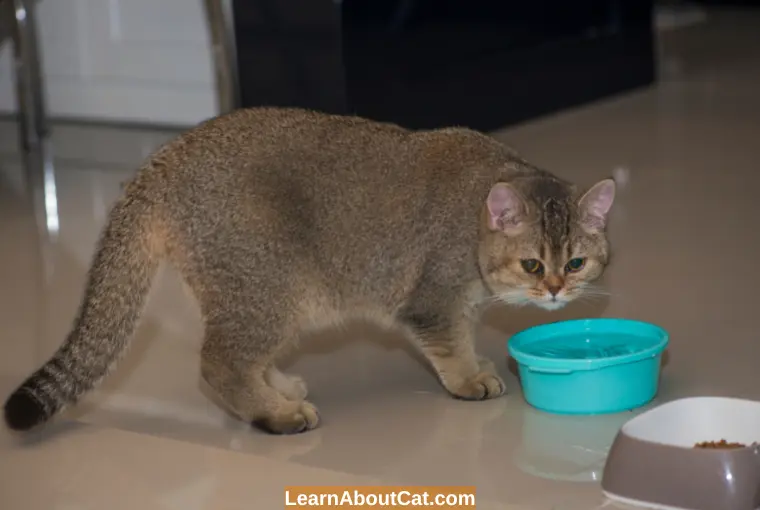
Cats consume around 12 cups of water per day if they have 5 pounds body weight. A 10-pound cat must consume 7-9 ounces (or almost 1 cup) of water daily. About 70–80% of a can of wet food is made up of water. Now you know how much water they drink each day. Eating wet food can be beneficial for a variety of reasons. Making sure your cat gets some of the water they need each day is a crucial consideration. This is essential for cats suffering from renal disease, diabetes, or urinary tract issues.
Additionally, canned food has more protein but fewer carbs. This is quite beneficial for diabetic cats. As you may recall from the list above, all of these medical conditions have the potential to exacerbate dehydration.
Why Did My Cat Stop Drinking Water?
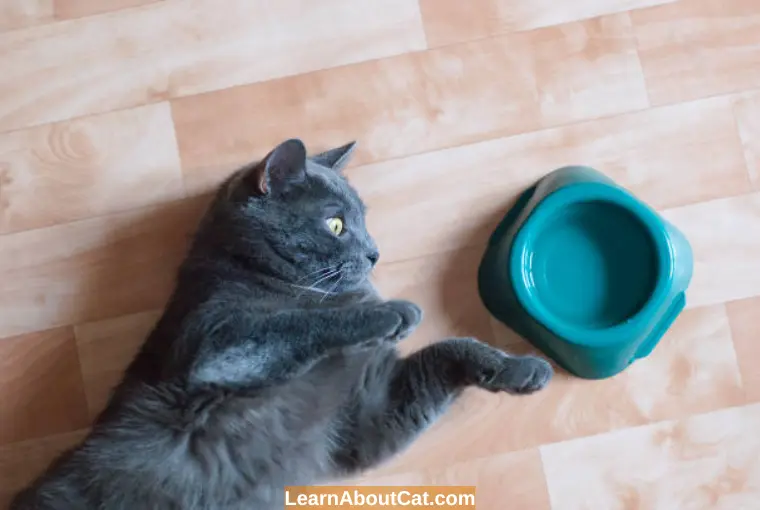
When a cat stops consuming food or liquids, it is typically an indication of a more serious ailment that requires immediate attention. The underlying issue might be:
- Liver disease
- Kidney disease cancer
- A periodontal disease
- Changes in diet, activity level, temperature, recent surgery, age, and changes in the water dish’s cleanliness, composition, and location are some less major likely causes of a cat not drinking water.
- If the water source is polluted or dirty, if it is shared with another animal, or if the location of the water dish has recently changed, your Cat may have stopped drinking water.
Consequences of Cat Dehydration
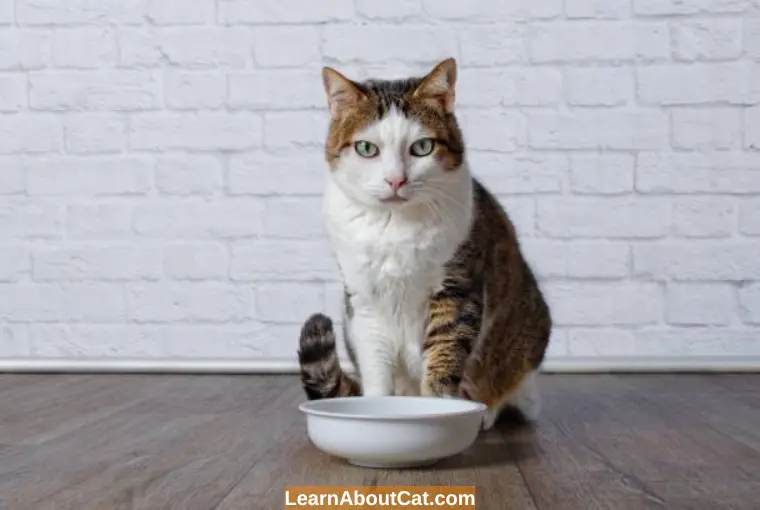
Though it could be challenging to monitor your Cat’s water intake, there are several indicators you can watch out for to determine whether your Cat is dehydrated.
1. Skin Testing
If you gently squeeze and pull up on the skin of your Cat’s shoulders, it should immediately return to normal. Your Cat can be dehydrated if the skin is slack and retracts more slowly than usual. So, working from home is a fantastic concept.
2. Sunken Eyes
Cats frequently have gorgeous, full eyes. Your Cat may be dehydrated if you notice that its eyes have become smaller or look duller. It’s unusual to see a cat pooping. They may be overheated and dehydrating if you see them panting.
3. Cats Frequently have Moist, Sticky Gums
They could be dehydrated if they suddenly become stickier. However, proceed with caution while checking this. No matter how much you like your Cat, they could bite you if you do this for the first time. It’s an excellent method for checking your Cat’s teeth at the same time.
4. Less Urination
If you notice that your Cat is peeing less, this might be a sign that its food is deficient in water. Additionally, look into the likelihood that their inability to urinate is a contributing factor. When in doubt, it is advised to seek professional advice.
5. Laziness
When you go home, they usually greet you and are rather energetic, but all of a sudden, they look more worn out or less engaging. This can be a sign of dehydration.
6. Vomiting or Diarrhoea
Whether a cat vomits or has diarrhoea, it’s not always a sign that it’s dehydrated.
How to Monitor Your Cat’s Water Intake?
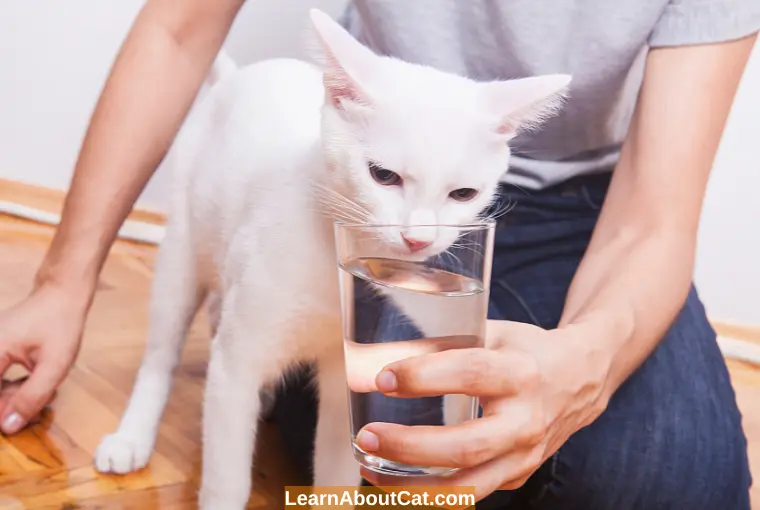
The amount of water a cat appears to be drinking cannot be used to estimate its daily water consumption. If your cat is eating wet food, it probably won’t need to drink much additional water. If they do consume alcohol, they may do so when they are away from home or even while they are asleep.
Focus on identifying the water level in your Cat’s dish at night. Keep a notebook to keep tabs on their drinking habits. Knowing trends enables you to get your Cat medical help before things get worse when anything notably changes.
If a Cat Won’t Drink Water, When Should You Take it to the Veterinarian?
If your Cat hasn’t had any water in the past 48 to 72 hours or displays other worrying symptoms, including lethargy, appetite loss, or changes in urine or faeces, you should take them to the vet as soon as you can.
Your Veterinarian can examine your Cat to see whether they are dehydrated, suffer from any of the conditions mentioned above, or have another issue that would require medical attention.
Frequently Asked Questions
The Bottom Line on How to Get Your Cat to Drink More Water
With this knowledge, you may take steps to maintain your Cat’s happiness, health, and hydration. You don’t need to employ all of the aforementioned tips and tricks in order to see improvement. Choose the one that you can implement and maintain the easiest.
However, if you have any worries about your Cat’s health or if none of these recommendations appears to be working, speak with your Veterinarian. A cat that is very dehydrated might become very ill soon! You should check your Cat’s health to prevent any problems. But extreme thirst is also worrisome.
Who is Isabella?
My name is Isabella, and I am a dedicated and knowledgeable cat enthusiast. With years of experience caring for cats and a deep love for felines, I made a mission to help other cat lovers navigate the challenges of cat ownership.

